
Photograph showing label for 500 milligram vial of Cefazolin
- Subject:
- Career and Technical Education
- Health Science
- Material Type:
- Diagram/Illustration
- Author:
- Jody Myhre-Oechsle
- Date Added:
- 04/14/2021

Photograph showing label for 500 milligram vial of Cefazolin

Animation demonstrating drug and receptor binding
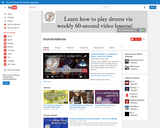
This resource includes a power point detailing basic camera shots and angles for film analysis plus activities where pupils are interactive and try out the different angles using camera frame worksheet. Additionally, it includes a quiz worksheet with answer key.

This is one of Dan Meyer's "Three-Act Math" problems which gives students two choices for the purchase of a discounted product. One of the choices is a percent discount while the other is a dollar value discount. The students choose the best deal.
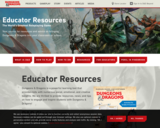
Dungeons & Dragons is a powerful learning tool that provides kids with numerous social, emotional, and creative benefits. We are thrilled to provide resources, news, and tips on how to engage and inspire students with Dungeons & Dragons!
D&D Classroom Curriculum:
Are you looking for a fun and engaging way to empower your students to become more confident, tackle challenges head-on, and learn perseverance? Download the NEW Puzzles, Mazes, and Mysteries D&D-inspired teaching kits for grades 4-6 and 6-8!
D&D Afterschool Club Kit:
Afternoons of Adventure Await! The D&D Afterschool Kit contains everything you need to start a D&D club at your school or library:
- One (1) copy of the recently released D&D Starter Set: Dragons of Stormwreck Isle
- Instructions and guidelines for club organizers
- A quick demo and learn-to-play guide for Dungeon Masters
- Easy-to-read character cards
- A poster to help promote your club
- There is no cost for qualifying organizations. If you are a representative of the following organizations, you may request a kit sent to your organization’s address: libraries, schools, community centers, or other enrichment organizations (scouting, alternative learning centers, etc.).
NOTE: Our Fall ‘22/Winter ‘23 physical kits are sold out. The 2023 Afterschool Club Kit will be available in the summer. To reserve your Fall ‘23/Winter ’24 kit, please follow these instructions:
- Submit a request for the kit at our customer service request portal, located here.
- Click on "sign in" at the top navigation of the page. If you don't have a Wizards account, create one by clicking "register" on the Wizards account sign in page. (You will need a Wizards account to reserve a kit.)
- On the customer service request portal, under "What would you like to contact us about?" select "D&D Educator Kit" if it’s not already populated.
- Fill out the remainder of the form, including your organization's information. That's it!
*Afterschool Club Kits are available to organizations in the United States and Canada only.
Promote Your D&D Club!:
- Looking for additional assets to highlight your organization’s D&D club? We’ve got you covered! Visit the digital marketing hub to find customizable posters and player resources.
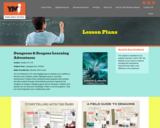
Are you looking for a fun and engaging way to empower your students to become more confident, tackle challenges head-on, and learn perseverance? Explore these standards-based programs with activities that take students through critical-thinking exercises inspired by the Dungeons & Dragons roleplaying game and its characters. Students and teachers do not need prior knowledge of D&D to use the programs. They just need imagination and a collaborative spirit!
For grades 4-6, and 6-8 (Subject Area: Language Arts, STEAM). Made possible by: Wizards of the Coast
Website includes lesson plans, a "Field Guide to Dragons", "Storytelling with the Bard", Activity Books, Coloring Pages, "Build an Adventure" kit, a Digital Magazine, Character Wardrobes & Gear, free "Encounters", guides, "How-to's", webinars about the pedagogical benefits of D&D, and more!!

This resource can be used for a lesson working with dynamics as distnaces rather than "volume."

This is the original school library reopening plan proposed by the ECASD LMS. Our practices, protocols and work have changed with decreased spread in our area and increased knowledge of Covid 19.
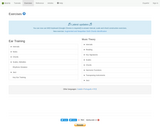
This free resource is a great resource for students to practice music theory and ear training exercises. The exercises include: For Ear Training Intervals, Notes, Chords, Scales, Melodies (Rhythmic Dictation), and Jazz (Key Ear Training). For Music Theory: Intervals, Reading, Key Signatures, Scales, Chords, Harmonic Funtions, Transposing Instruments, and Jazz.
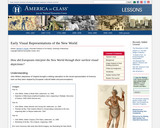
This lesson considers how Europeans interpreted the New World through some of their earliest visual depictions. America in Class Lessons are tailored to meet the Common Core State Standards. The Lessons present challenging primary resources in a classroom-ready format, with background information and analytical strategies that enable teachers and students to subject texts and images to the close reading called for in the Standards.

"The easyCBM system was developed by educational researchers at the University of Oregon in close collaboration with school district partners across the United States. It is designed to give teachers insight into which of their students may need additional instructional supports as well as to provide a means by which they can measure the effectiveness of their teaching. System reports provide information that supports evidence-based decision making, and the Interventions interface streamlines the process of keeping track of students' instructional program, a feature that is particularly helpful for student study team meetings and parent conferences.
The full District system includes a variety of curriculum based measures in the content areas of early literacy in both English and Spanish as well as oral reading fluency, vocabulary, and reading comprehension. In addition, it offers mathematics measures with reach to both the National Council of Teachers of Mathematics (NCTM) Focal Point Standards and the Common Core State Standards in Mathematics, with built-in read-aloud and Spanish translation accommodations. The Teacher Deluxe Edition offers the same features as the District version, but is optimized for individual teacher, rather than system-wide adoption. A truncated version, the Lite Edition, is available free of charge for individual teachers."

This is a PowerPoint on Eating Disorders, including both common and uncommon ones.
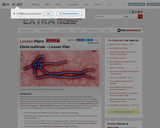
Interdisciplinary lesson plan on the ebola outbreak for middle and high school students.

This program surveys two centuries of art and culture in the city now known as Tokyo. Ceramics, screens, textiles, prints, paintings, and armor are among the materials discussed.
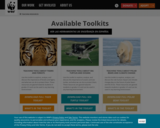
Various different resources to teach about plants and wildlife. Available in spanish as well!! Lessons, readings, and small activities. Some guides/coloring sheets available as well.
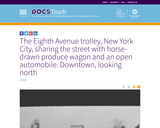
The Eighth Avenue trolley, New York City, sharing the street with horse-drawn produce wagon and an open automobile. Downtown, looking north (1904)

This resource is for students in K-4 who want to learn more about Earth's systems by having students read a science storybook as the lesson and then there are additional activities. There are 7 lessons which are air quality, climate, clouds, Earth system, seasons, soils, and water.

A learning activity for the Scoop on Soils book in the Elementary GLOBE Series. Each student will make predictions about the properties of various soil samples. Then they will examine several types of soils and record their observations. Next, they will learn about soil profiles and horizons by both examining a soil sample in a jar and by creating a soil profile flip chart. The purpose of the activity is to provide the opportunity for students to ask questions and make observations about soil and introduce students to the properties of soil and to the concept of soil profiles and horizons. After completing this activity, students will know about soil's different properties and about soil profiles. Students will know that soils have different properties including texture, color, and size. They will know that soil forms layers based on these properties.

In this activity, students will record a list of things they already know about hummingbirds and a list of things they would like to learn about hummingbirds. Then they will conduct research to find answers to their questions. Using their new knowledge, each student will make a hummingbird out of art supplies. Finally, using their hummingbirds as props, the students will play charades to test each other in their knowledge of the ruby-throated hummingbirds. The purpose of this activity is to provide students with information on ruby-throated hummingbirds, provide students with the opportunity to conduct research on hummingbirds in topic areas that interest them, and to provide students with opportunities to share their knowledge with other students. By completing this activity, students will gain knowledge about ruby-throated hummingbirds. They will also gain experience researching a topic of their choosing related to hummingbirds and communicating those results in several different formats.

Students will learn about magnification and how a magnifying lens works. They will examine a variety of different objects, first without a magnifier and then with a magnifier, and compare what they observe. They will practice observing details of these objects with magnifying lens. The purpose of this activity is for students to learn about observation skills and how tools can help people make observations, what "magnification" means, and to learn that scientists use tools, such as magnifying lenses, to examine objects. Students will be able to identify a magnifying glass and its purposes. They will be able to describe how the same object looks different when using the unaided eye versus a magnifying lens.